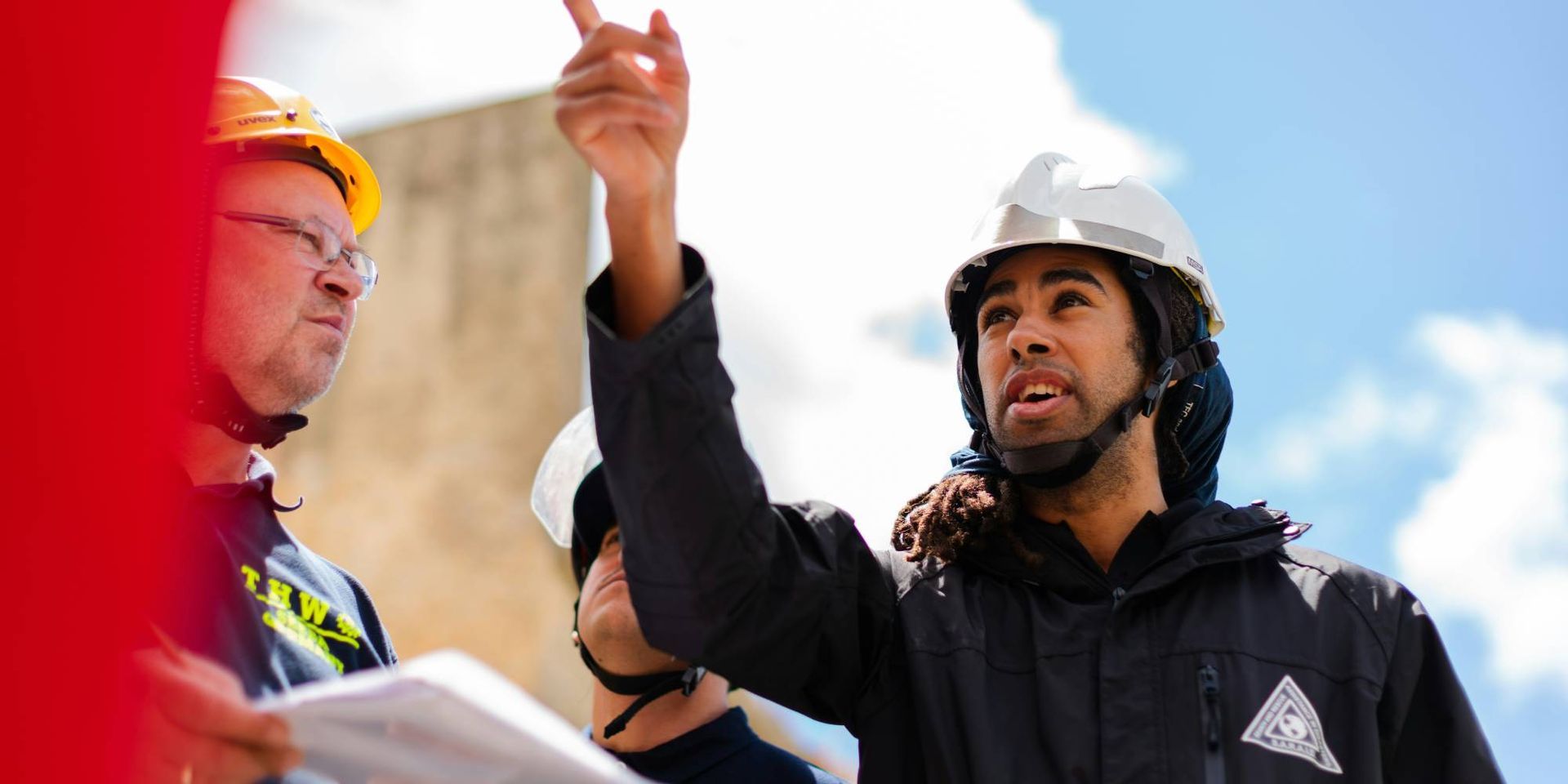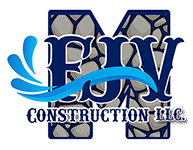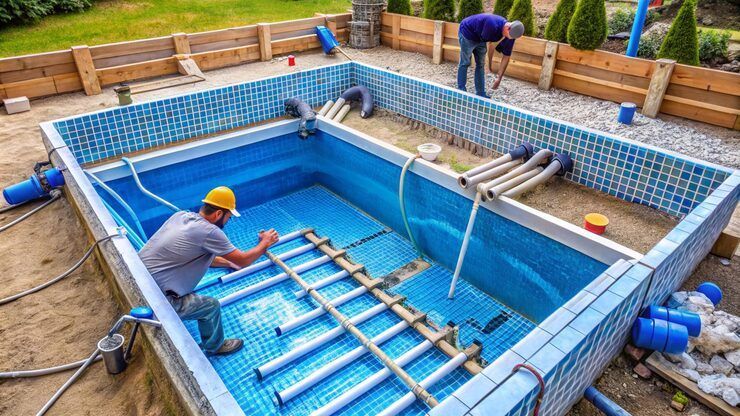5 Types of Excavation Services Best Suited for Pool Installation Projects
Installing a pool is a rewarding upgrade for any property, but before construction begins, the land must be properly prepared. This critical stage involves specific excavation services that ensure the pool structure is stable, safe, and built to last. Each excavation method serves a distinct purpose based on the site’s characteristics, such as soil type, topography, and water saturation.
Here are five of the most effective excavation techniques used in pool installation, with insights into why
hiring professional excavation contractors can make all the difference, especially if you’re searching for
land excavation near Danbury, CT.
Table of Contents
- Key Takeaways
- 1. Trenching Excavation: Preparing Utility Pathways
- 2. Topsoil Excavation: Clearing the Way for Structural Work
- 3. Rock Excavation: Tackling Hard or Rocky Terrain
- 4. Muck Excavation: Managing Waterlogged or Muddy Conditions
- 5. Earth Excavation: Creating the Pool’s Basic Shape
- 4 Factors That Influence Excavation Method Selection
- How to Choose the Right Professional Excavation Service Provider
- Frequently Asked Questions
- Get Expert Pool Excavation Services in Danbury, CT, with FJV Construction!
Key Takeaways
✔ Trenching excavation enables the precise installation of plumbing and electrical lines, forming the foundation for a safe and functional pool system.
✔ Topsoil excavation removes unstable, organic-rich soil to ensure a solid base that prevents settling and drainage issues under the pool.
✔ Rock excavation is essential for breaking through hard subsurface materials like bedrock, allowing for accurate depth and structural support.
✔ Muck excavation eliminates saturated, unstable soils that can shift or crack the pool over time, ensuring long-term stability.
✔ Earth excavation shapes the pool’s design by forming its depth, contours, and slope, creating a reliable base for construction.
1. Trenching Excavation: Preparing Utility Pathways
Trenching is a foundational component of pool excavation services, especially for in-ground pools that require carefully routed utility lines. This method creates long, narrow trenches that are strategically placed around the pool layout to accommodate various mechanical systems.
For property owners researching land excavation near Danbury, CT, trenching is a critical component of smart site preparation and land clearing. Trusted providers of excavation services combine trenching expertise with long-term planning to ensure smooth pool operation.
Purpose and Benefits of Trenching Excavation
- Facilitates Water Circulation Systems:
Trenching allows for the proper installation of plumbing lines that carry water to and from the pool. These lines must be placed at exact depths and gradients to ensure proper flow and pressure balance.
- Supports Electrical Infrastructure: Electrical conduits for lighting, filtration systems, heaters, and automation controls are laid within these trenches. Separation from water lines is vital to meet safety regulations.
- Improves Maintenance Accessibility: Proper trench design ensures that utilities are easy to locate and access later, minimizing damage during future upgrades or repairs.
- Enhances Site Organization:
Trenching helps segment the
pool installation site into organized zones. This keeps the worksite efficient and reduces the risk of pipe overlaps or accidental punctures.
- Adapts to Challenging Landscapes: In properties with uneven ground or tight yard spaces, trenching must be customized. Skilled professional excavation contractors use trenchers and mini-excavators to navigate slopes, tree roots, and pre-existing structures.
Why It Requires Professional Expertise
- Precision is Non-Negotiable: A few inches off in depth or slope can lead to water pooling, electrical shorts, or structural stress on pipes. Even minor misalignments can cause long-term damage that is costly and difficult to repair once the pool is complete.
- Compliance with Code Requirements: Local building codes, especially in regions like Danbury, CT, mandate minimum distances between water and electric lines, proper conduit materials, and trench backfill specifications. Occupational Safety and Health Administration (OSHA)
mandates that trenches 5 feet deep or more must have a protective system in place unless the excavation is made entirely in stable rock.
- Drainage Planning Integration: Trenching often includes paths for French drains or sump systems that divert groundwater away from the pool, preventing hydrostatic pressure under the shell.
2. Topsoil Excavation: Clearing the Way for Structural Work
Topsoil excavation is the first hands-on step during site preparation and land clearing. This layer of soil, though rich in nutrients, is soft, porous, and highly unstable, making it unsuitable for supporting heavy concrete or fiberglass pool structures.
When searching for land
excavation near Danbury, CT, selecting a provider experienced in topsoil excavation ensures the groundwork is set for a safe and successful pool build. It’s a subtle but essential phase of pool excavation services that affects every step that follows.
Why Topsoil Must Be Removed
- Organic Breakdown Creates Voids: Over time, plant roots, leaves, and organic matter in topsoil decompose, leaving gaps and air pockets. These voids lead to uneven settling and can crack the pool shell.
- Improves Soil Load-Bearing Capacity: Removing topsoil exposes the denser subsoil, which offers a much stronger foundation for further pool excavation services and installation work.
- Prevents Surface Water Accumulation: Topsoil retains water and slows drainage. Its removal reduces the chance of water pooling under the structure, which could cause lifting or shifting.
- Enables Accurate Grading and Layout: A clean slate ensures that elevation changes, depth transitions, and plumbing trench routes are properly marked and excavated.
What the Process Involves
- Stripping and Sorting:
Heavy equipment strips off the top 4–12 inches of soil. Some excavation services providers may sort reusable soil for landscaping or turf restoration.
- Transport and Disposal:
Excess topsoil is either stockpiled or hauled away, depending on the volume and project design. This is often done using dump trucks in coordination with the main excavation schedule.
- Surface Compaction: After topsoil removal, the exposed subgrade is compacted to eliminate loose material and prepare the site for accurate shaping.
Key Considerations for Homeowners
- Volume Can Be Deceiving: Many are surprised at how much topsoil needs to be removed, even for small residential pools. This affects cost, equipment needs, and timelines.
- Environmental Impact:
Responsible excavation services handle topsoil with care. When possible, materials are reused for planting beds, lawns, or erosion control elsewhere on the property.
- Permits May Be Required:
In some jurisdictions, removing significant soil volumes requires notice or permits. Reliable professional excavation contractors manage this process as part of full-service delivery.
3. Rock Excavation: Tackling Hard or Rocky Terrain
Certain properties—especially those in hillside or rural areas—sit atop challenging ground conditions that include solid rock, shale, or dense mineral deposits. In such cases, standard excavation equipment cannot break through, and rock excavation becomes necessary.
This method is among the most demanding excavation services, requiring specialized tools and high-level precision to safely remove hard material and shape the ground for pool construction. Hiring professional excavation contractors ensures the work is performed safely, efficiently, and in compliance with local regulations.
When Is Rock Excavation Needed?
- Presence of Bedrock or Dense Subsurface Layers: Pools cannot be installed over unyielding materials like granite or limestone without significant structural compromises. Rock excavation clears these materials to create a uniform base.
- Interference with Required Pool Depth:
Shallow bedrock can obstruct the target depth for deep ends or infinity edges. Excavators must break through to ensure the desired layout.
- Irregular Terrain or Elevation Changes:
In areas with uneven grade or natural stone outcroppings, rock excavation helps level the surface during site preparation and land clearing.
- Improved Structural Integrity: Removing fractured or unstable rock ensures the surrounding soil and foundation remain solid, minimizing the risk of ground shifts.
How Professionals Handle Rock Excavation
- Use of Specialized Equipment: Excavators rely on jackhammers, rock saws, and hydraulic breakers to fragment solid rock without damaging nearby infrastructure.
- Controlled Blasting (If Permitted):
In severe cases, small, controlled blasts are used to break up rock layers. This process must follow strict safety and environmental guidelines.
- Seamless Integration With Other Services: Experienced teams coordinate rock removal with other pool excavation services, preventing delays and keeping the site organized.
- Minimization of Disruption: Noise, dust, and vibration control strategies are implemented to protect nearby homes and structures.
4. Muck Excavation: Managing Waterlogged or Muddy Conditions
Muck excavation addresses one of the most unpredictable site challenges: wet, unstable soils that retain excessive moisture. These materials—commonly found in wetlands, poorly drained yards, or near rivers—are unsuitable for construction and must be removed before building a pool.
Effective muck removal is a vital part of both pool excavation services and larger site preparation and land clearing efforts.
In a city like Danbury, where wetlands and wooded plots are common, land excavation near Danbury, CT, frequently includes muck removal in the project scope. Choosing qualified professional excavation contractors ensures the process is handled properly, avoiding costly repairs and delays.
Why It Must Be Removed
- Lack of Load-Bearing Capacity:
Muck is soft and shifts under pressure, making it incapable of supporting a pool’s weight. Leaving it in place increases the risk of sinking or cracking.
- Inconsistent Compaction:
Waterlogged soils compact unevenly, leading to structural stress and uneven settling over time.
- Promotes Excess Moisture Retention: Muck tends to retain water, which can build up underneath the pool and exert hydrostatic pressure on the base or shell.
- High Risk for Future Structural Problems: Pools installed over muck are prone to shifting, tilting, or leaking as ground conditions fluctuate with the seasons.
How Is It Done?
- Soil Removal and Hauling:
Contractors use excavators to dig out the saturated soil and remove it from the site entirely.
- Replacement With Structural Fill: Clean, compactable fill material such as gravel or engineered soil is brought in to replace the removed muck. This ensures a strong foundation.
- Supplemental Dewatering Techniques: Methods such as sump pumps, perimeter drains, or geotextile fabrics are used to redirect groundwater away from the excavation site.
Why Expertise Is Essential
- Real-Time Decision Making:
Soil moisture levels can vary dramatically, even within a single yard. Professionals make on-the-spot adjustments to account for these inconsistencies.
- Integration With Full Project Scope:
Muck excavation must coordinate with the timing of plumbing installation, concrete pouring, and liner placement, making experience a must.

5. Earth Excavation: Creating the Pool’s Basic Shape
Earth excavation is the phase where the general shape of the pool comes to life. After removing topsoil and stabilizing the site, professional excavation contractors begin digging into the denser subsoil to form the pool's layout, including the slope, floor depth, and step formations.
This phase transitions the project from preparation to construction. With the contours set, site preparation and land clearing conclude, and the installation of steel reinforcements, plumbing systems, and concrete shells can begin.
Why Earth Excavation Is Essential
- Defines the Pool’s Geometry:
This step outlines the contours of the pool, such as the deep end, shallow zone, tanning ledges, and spa areas, exactly according to engineered designs.
- Ensures Correct Depth and Gradient:
Uneven excavation can disrupt water balance and filtration efficiency. Precision grading supports proper water flow and distribution.
- Provides a Base for Structural Layers:
Once shaped, the excavated area serves as the foundation for rebar installation, plumbing layout, insulation, and concrete work.
- Supports Critical Load Calculations: The subsoil must be carved to handle the weight and pressure of thousands of gallons of water. A precise excavation avoids overloading any one area.
How Earth Excavation Is Performed
- Use of Laser and GPS Tools:
Advanced equipment like laser levels and GPS-guided excavators ensures accurate shaping to match the site plan.
- Layer-by-Layer Digging:
Excavators often remove soil in stages to avoid over-excavation and to maintain control over slope angles and elevations.
- Soil Hauling and Disposal:
Removed subsoil is either redistributed on-site for landscaping or transported off-site to maintain a clean work zone.
- On-Site Adjustments: Contractors fine-tune the contours during excavation to accommodate last-minute design changes or to adapt to unexpected soil conditions.
Key Considerations for Property Owners
- Stability First:
Before proceeding to this stage, prior excavation (topsoil, muck, rock) must be properly compacted to prevent shifting or cracking.
- Code Compliance Is Crucial:
Pool depth, wall angles, and walk-in entry points must follow local codes, especially regarding safety and barrier requirements.
- Efficiency Impacts Timelines:
Since this is typically the longest and most labor-intensive part of excavation services, efficient execution shortens overall project duration.
4 Factors That Influence Excavation Method Selection
Each site comes with unique characteristics. Therefore, it’s essential to choose the correct type of excavation based on the following factors:
1. Soil Composition
Clay, sand, rock, and muck all demand different excavation techniques. A soil test often determines the appropriate approach before beginning site preparation and land clearing.
2. Pool Size and Design
Deeper or uniquely shaped pools require more advanced earth excavation. Infinity edge or lap pools may demand added precision during shaping.
3. Terrain Accessibility
Compact residential yards or steep slopes may limit machinery access. This affects trenching and earthwork strategies used by excavation services providers.
4. Local Permits and Building Codes
Municipal guidelines in Danbury, CT, and surrounding areas can dictate how and where excavation takes place. Always ensure pool excavation services align with regional laws.

How to Choose the Right Professional Excavation Service Provider
The success of a pool installation depends heavily on who handles the excavation. The right provider doesn’t just move earth—they bring experience, equipment, and strategy. Here’s what to look for when choosing professional excavation contractors:
1. Specialization in Pool Excavation Services
Contractors with a background in pool projects understand the intricacies of depth grading, slope shaping, and trenching for plumbing and electrical systems. Their experience ensures that each step aligns with construction plans and engineering requirements.
2. Licensing, Insurance, and Compliance
Reliable contractors are fully licensed and insured. This safeguards homeowners against liability and ensures all site preparation and land clearing activities meet state and local codes. Excavation and trenching are among the most hazardous construction operations. OSHA reported 39 worker deaths in 2022 from trenching-related incidents, double the previous year, proving the importance of professional safety practices.
3. Modern Equipment and Technology
Professionals use GPS-guided machinery, laser grading tools, and advanced trenching equipment. These technologies improve accuracy, reduce waste, and keep excavation on schedule, vital for comprehensive excavation services.
4. Clear Communication and Project Planning
Effective contractors provide detailed timelines, transparent estimates, and proactive updates throughout the job. This keeps the project organized and ensures each phase—from muck excavation to backfilling—proceeds smoothly.
5. Strong Local Reputation
Search for land excavation near me in Danbury, CT, and prioritize providers with strong customer reviews and a history of successful local projects. Regional knowledge ensures they’re familiar with common soil conditions and permitting requirements.
Frequently Asked Questions
What is the meaning of excavation services?
Excavation services involve the removal of earth, rock, or other materials from a site to prepare it for construction. These services are essential for tasks like pool installation, foundation laying, or utility trenching. They often include grading, trenching, and site preparation to create a safe, stable work area.
What is the 5 rule of excavation?
The “5-foot rule” in excavation refers to OSHA guidelines stating that protective systems are required for trenches deeper than 5 feet. These systems include sloping, shoring, or shielding to prevent cave-ins. This rule ensures worker safety during excavation projects of significant depth.
What does excavation include?
Excavation includes digging, trenching, grading, leveling, and removing soil or rock to prepare land for construction. It also involves managing utilities, drainage, and soil stabilization. The process is often part of broader site preparation and land clearing efforts.
What is the difference between digging and excavation?
Digging typically refers to small-scale, manual soil removal like gardening or minor landscaping. Excavation, on the other hand, is a larger, more structured process that involves heavy machinery and engineering plans. It is used for construction projects that require depth, accuracy, and safety compliance.
What depth is considered excavation?
Any removal of earth for construction purposes is considered excavation, regardless of depth. However, specific safety regulations often apply when the depth exceeds certain thresholds, like 5 feet, per OSHA standards. Even shallow excavations must be planned carefully to ensure safety and structural integrity.
Get Expert Pool Excavation Services in Danbury, CT, with FJV Construction!
Planning a pool project in Danbury, CT? Make sure your first step—excavation—is handled with precision and care by the local professionals you can trust. FJV Construction provides reliable, skilled excavation services tailored to meet the needs of residents throughout Danbury, CT. We offer comprehensive support backed by local experience and a commitment to safety.
Contact us today and let the top excavation pros in Danbury, CT, turn your backyard dream into reality!



